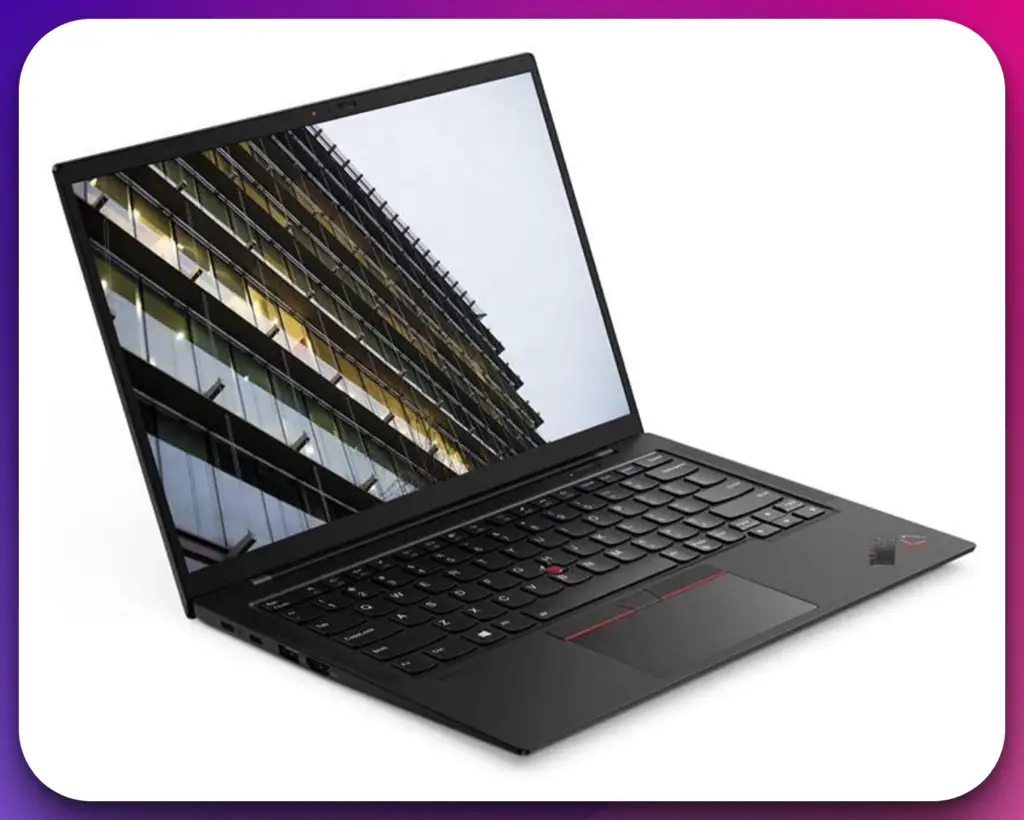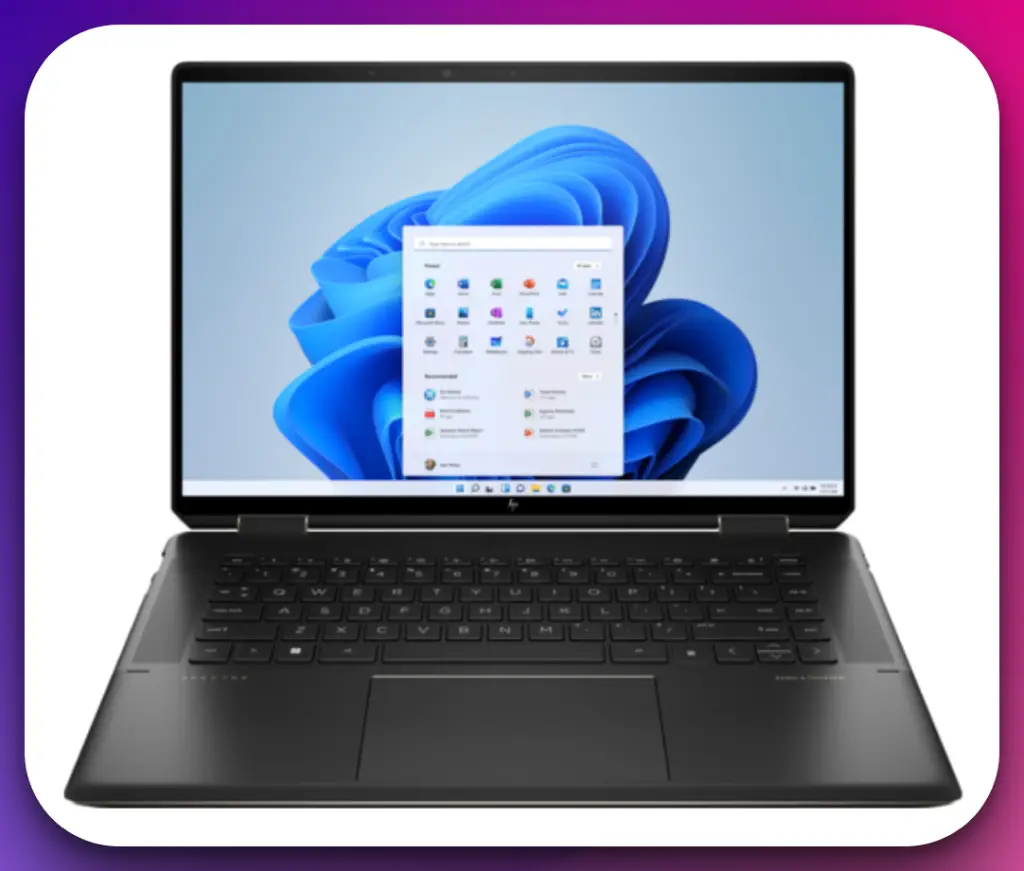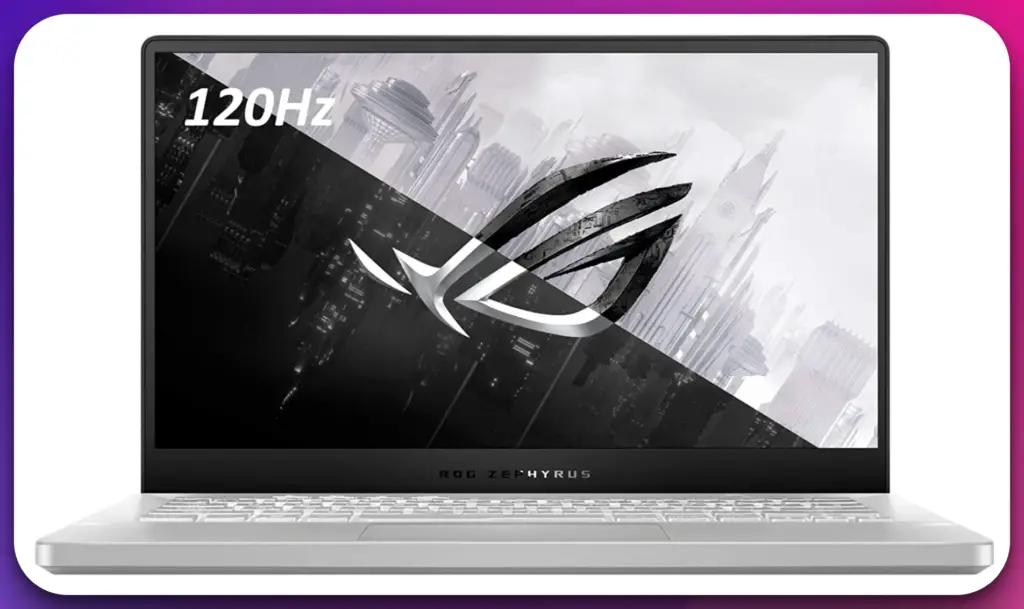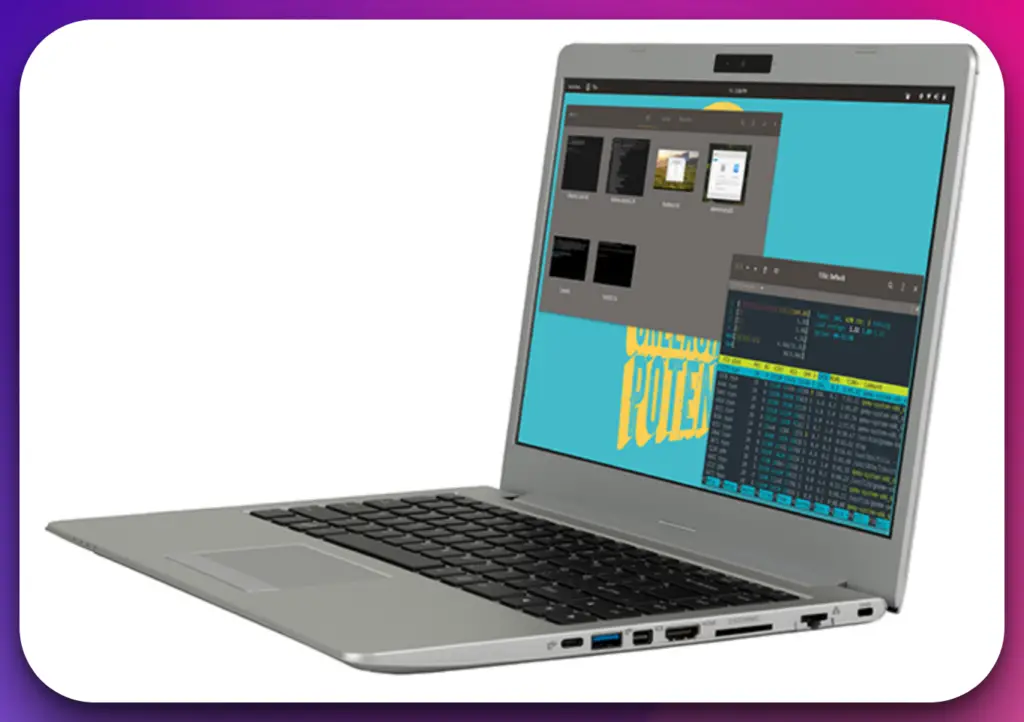We all know the struggle: you’re excited about diving into the world of ethical hacking, pen testing, or cybersecurity with Kali Linux, but your laptop just can’t keep up.
It’s frustrating to deal with a slow system, constant crashes, or compatibility issues when you only want to focus on mastering your skills.
You’ve probably already realized that not every laptop on the market is built to run Kali Linux smoothly.
Some high-performance machines fall short due to hardware compatibility issues, poor battery life, or insufficient processing power.
Your hacking efforts become an uphill battle, and instead of making progress, you find yourself troubleshooting hardware problems or wrestling with system slowdowns.
But worry not;💁 your journey mustn’t be filled with roadblocks. This is why we’ve researched and compiled a comprehensive list of the best laptops for Kali Linux.
We’ve considered processor power, RAM, storage, battery life, and compatibility with Kali Linux.
Whether you’re a beginner just starting or an experienced professional looking for an upgrade, you’ll find the perfect device to meet your needs and ensure a smooth, frustration-free Kali Linux experience.
What is Kali Linux?🔭
Kali Linux is an advanced, specialized operating system meticulously crafted for cybersecurity professionals. With its cutting-edge tools and extensive capabilities, Kali Linux has emerged as an indispensable asset in digital defense.
At its core, Kali Linux is built on the solid foundation of the Debian Linux distribution.
Still, it sets itself apart by focusing primarily on penetration testing, ethical hacking, and security auditing.
Its purpose lies in equipping cybersecurity experts with a comprehensive toolkit to assess, identify, and rectify computer system and network vulnerabilities.
Kali Linux boasts an impressive repository of pre-installed tools and utilities encompassing various aspects of cybersecurity.
From network analysis and vulnerability scanning to password cracking and forensic analysis, it offers extensive capabilities designed to replicate real-world cyber threats and help professionals fortify their defenses.
The significance of Kali Linux lies in its ability to simulate and evaluate potential cyber attacks on target systems, allowing professionals to identify weaknesses, evaluate security measures, and develop robust solutions.
It is an invaluable asset for organizations and individuals seeking to proactively safeguard their digital infrastructure against malicious actors.
In conclusion, Kali Linux stands at the forefront of cybersecurity, empowering professionals with the tools and expertise necessary to bolster defenses and stay one step ahead in an ever-evolving digital landscape.
Before deepening the article, Let’s delve into the Kali Linux laptop requirements and discover the key components that make an ideal machine.
Minimum and Recommended System Requirements for Kali Linux✌️
Processor:- A powerful multi-core processor is the backbone of any Kali Linux laptop. Look for Intel Core i5 or i7 processors, or their AMD equivalents, to handle the resource-intensive tasks of vulnerability assessment and exploit development.
Memory:- Adequate RAM is crucial for running memory-intensive operations smoothly. A minimum of 8GB RAM is recommended, but opt for 16GB or even 32GB for seamless multitasking and handling large datasets if your budget allows.
Storage:- The ability to store and access vast amounts of data is essential. Opt for Solid-State Drives (SSDs) for faster read and write speeds, ensuring swift execution of operations and reducing loading times.
Graphics:- While Kali Linux isn’t primarily graphics-focused, a dedicated graphics card enhances the overall system performance. Look for NVIDIA GeForce or AMD Radeon cards to provide the necessary graphical horsepower for visualization tasks.
Wireless Adapter:- Given the nature of penetration testing, having a compatible wireless adapter is crucial.
Look for models that support monitor mode and packet injection, enabling you to interact with wireless networks effectively.
Battery Life:- Being on the move during engagements necessitates a laptop with decent battery life.
Aim for a laptop that offers at least 6-8 hours of battery backup to ensure uninterrupted work sessions.
Form Factor: Consider a compact and lightweight laptop, making it easier to carry during on-site assessments and reducing the strain on your shoulders.
Operating System: Last but not least, ensure that the laptop is compatible with Kali Linux and supports the necessary drivers for optimal performance.
Here’s a table outlining the recommended system requirements for running Kali Linux on a laptop:-
| Requirement | Minimum Specifications | Recommended Specifications |
|---|---|---|
| Processor | 1 GHz Pentium 4 processor or equivalent | 2 GHz dual-core processor or higher |
| RAM | 1 GB RAM | 4 GB RAM or more |
| Storage | 10 GB free disk space | 20 GB free disk space or more |
| Display | 800×600 resolution or higher | 1024×768 resolution or higher |
| Graphics Card | Any graphics card with 3D acceleration capabilities | Dedicated graphics card with updated drivers |
| Network Interface | Ethernet or Wi-Fi adapter | Ethernet or Wi-Fi adapter |
| USB Ports | At least one USB port | Multiple USB ports |
| Battery Life | N/A (dependent on laptop model) | At least 4 hours of battery life |
| Operating System | Kali Linux | Latest version of Kali Linux |
Considering these requirements, We came up with a list of the best laptops for kali linux that will suit every budget.
Factors to Consider When Choosing a Laptop for Kali Linux
When venturing into the realm of Kali Linux, selecting a laptop that meets the specific requirements for optimal performance is crucial.
Several factors should be considered to ensure a seamless experience with this specialized operating system.
Processing power is a key consideration when choosing a laptop for Kali Linux.
The processor, such as an Intel Core i5 or higher, should possess ample multithreading capabilities to handle resource-intensive tasks like password cracking or vulnerability scanning.
Another important factor is RAM capacity. Kali Linux benefits greatly from having a minimum of 8GB of RAM, although 16GB is preferred to accommodate multitasking, virtual machine usage, and the memory demands of various security tools.
Storage is also crucial. Opting for a solid-state drive (SSD) rather than a traditional hard disk drive (HDD) ensures faster boot times and improved data access.
Kali Linux’s extensive toolset and forensic analysis often necessitate swift data retrieval, making an SSD highly desirable.
Considering the nature of cybersecurity tasks, a laptop with compatible Wi-Fi capabilities is essential.
Kali Linux relies heavily on wireless network analysis and penetration testing, so ensuring that the laptop’s wireless card supports monitor mode and packet injection is paramount.
Additionally, portability, battery life, and display quality are factors to contemplate based on individual preferences and needs.
A lightweight and compact laptop allows for ease of travel and fieldwork, while extended battery life is beneficial for prolonged sessions. A high-resolution display with accurate color reproduction enhances the overall user experience.
By considering these factors when selecting a laptop for Kali Linux, cybersecurity professionals can ensure a well-suited and efficient computing environment to carry out their crucial tasks effectively.
Here, we have prepared a list of some of the best ones for you –
Best Laptops For Kali Linux – Powerful and Portable
1. Dell XPS 15
The Dell XPS 15 is an exemplary choice when seeking the best laptop for Kali Linux. Its exceptional hardware capabilities ensure optimal performance for security professionals and enthusiasts alike.

This powerhouse of a machine encompasses cutting-edge features and a sleek design, guaranteeing an immersive user experience.
Equipped with Intel Core processors, the Dell XPS 15 delivers unparalleled computing power and enables swift multitasking, which is crucial for resource-intensive activities on Kali Linux.
The laptop’s generous RAM capacity ensures the smooth execution of complex tasks, enhancing efficiency while performing security audits and penetration testing.
The high-resolution display of the Dell XPS 15 presents a visual treat, exhibiting intricate details that are invaluable for analyzing vulnerabilities and monitoring network activity.
Additionally, the laptop’s vibrant color accuracy proves beneficial when examining forensic evidence or engaging in digital forensics.
Dell’s commitment to compatibility shines through with the Dell XPS 15. It seamlessly integrates with Kali Linux, leveraging its Linux-friendly hardware and minimizing compatibility issues often encountered with other laptops.
This eliminates the need for time-consuming tweaks and configurations, allowing users to focus on their core tasks.
Portability is not sacrificed, despite its power. The Dell XPS 15 balances performance and portability, making it a suitable choice for professionals who require mobility without compromising productivity.
In conclusion, the Dell XPS 15 surpasses expectations and earns its title as one of the best laptops for Kali Linux.
Its robust hardware, stunning display, compatibility with the Linux ecosystem, and a perfect blend of power and portability make it an indispensable companion for security professionals harnessing the potential of Kali Linux.
Specifications:-
Here’s a table detailing the specifications of the Dell XPS 15 in terms of compatibility with Kali Linux OS:-
| Specification | Details |
|---|---|
| Processor | 10th or 11th generation Intel Core i5, i7, or i9 processors |
| Graphics Card | NVIDIA GeForce GTX 1650 Ti or GTX 1660 Ti, or NVIDIA Quadro T2000 |
| Memory | Up to 64 GB DDR4-2933 MHz RAM |
| Storage | Up to 2 TB PCIe NVMe SSD |
| Display | 15.6-inch InfinityEdge display with various resolutions (FHD, 4K) |
| Wireless | Intel Wi-Fi 6 AX1650 or Killer Wi-Fi 6 AX1650 wireless options |
| Ethernet | Killer Ethernet E3000 Gigabit Ethernet |
| Ports | 2 x Thunderbolt 3 (USB-C), 1 x USB-C 3.1, 1 x HDMI 2.0, 1 x SD card reader, 1 x headphone/microphone combo jack |
| Operating System | Compatible with Kali Linux and other Linux distributions |
| Battery | Up to 86 Whr battery |
| Dimensions | Height: 17 mm (0.66 in) |
| Width: 357 mm (14.06 in) | |
| Depth: 235 mm (9.27 in) | |
| Weight | Starting at 1.8 kg (4 lbs) |
Pros:-
Powerful Performance: The Dell XPS 15 boasts high-performance hardware, including Intel Core processors and ample RAM, enabling smooth and efficient execution of resource-intensive tasks on Kali Linux.
Impressive Display: With a high-resolution and color-accurate display, the Dell XPS 15 offers excellent visual clarity, allowing security professionals to analyze intricate details and conduct forensic investigations effectively.
Linux Compatibility: Dell’s commitment to compatibility ensures seamless integration with Kali Linux and other Linux distributions, minimizing the need for troubleshooting and enabling users to focus on their work.
Sleek Design and Portability: The Dell XPS 15 combines power with portability, featuring a sleek design that is lightweight and easy to carry. It offers mobility without compromising productivity, making it an ideal choice for professionals on the go.
Cons:-
Limited Upgradability: The Dell XPS 15’s compact design limits upgrade options. Upgrading components such as RAM or storage may be challenging or require professional assistance.
Price: The Dell XPS 15 is positioned as a premium laptop, which comes with a higher price tag compared to some other options. However, investing in its powerful hardware and performance capabilities may be worthwhile for those requiring top-notch performance.
Battery Life: Despite its performance prowess, the Dell XPS 15’s battery life may be shorter than laptops with lower power consumption. Users who rely heavily on extended battery usage may need to consider their power management strategies.
The Dell XPS 15 is an exceptional laptop for running Kali Linux, offering powerful performance, an impressive display, Linux compatibility, and a sleek design.
While there are minor drawbacks, such as limited upgradability and battery life, its strengths outweigh these limitations, making it a solid choice for security professionals and enthusiasts seeking optimal performance and reliability.
2. Lenovo ThinkPad X1 Carbon
The Lenovo ThinkPad X1 Carbon is unparalleled when selecting the best laptop for Kali Linux.
With its exceptional hardware specifications and renowned reliability, it offers a powerful and secure platform for security professionals and enthusiasts.

The ThinkPad X1 Carbon boasts cutting-edge components and a robust build, ensuring superior performance and durability.
Its Intel Core processors provide the necessary computational power to easily handle resource-intensive tasks, making it an ideal companion for Kali Linux users.
One of the standout features of the ThinkPad X1 Carbon is its meticulously designed keyboard. Its ergonomic layout and responsive keys allow for comfortable and efficient typing during long hours of penetration testing or coding sessions.
Regarding display, the ThinkPad X1 Carbon offers a vibrant and high-resolution screen, perfect for scrutinizing intricate details and analyzing security vulnerabilities.
The anti-glare coating reduces eye strain and provides optimal visibility even in challenging lighting conditions.
Furthermore, the ThinkPad X1 Carbon ensures seamless compatibility with Kali Linux. Lenovo’s dedication to Linux-friendly hardware guarantees a hassle-free experience, eliminating the need for extensive configuration and troubleshooting.
With its slim and lightweight design, the ThinkPad X1 Carbon strikes an excellent balance between portability and performance. It is a perfect choice for professionals who require mobility without sacrificing productivity.
In conclusion, the Lenovo ThinkPad X1 Carbon embodies the essence of the best laptop for Kali Linux, offering exceptional performance, durability, and compatibility.
Its powerful hardware, ergonomic keyboard, high-resolution display, and optimal portability make it an invaluable tool for security professionals, empowering them to tackle complex challenges confidently.
Specifications:-
| Specification | Details |
|---|---|
| Processor | 10th or 11th generation Intel Core i5, i7, or i9 processors |
| Graphics Card | Intel UHD Graphics or Intel Iris Xe Graphics |
| Memory | Up to 32 GB LPDDR4x RAM |
| Storage | Up to 2 TB PCIe NVMe SSD |
| Display | 14-inch IPS display with various resolutions (FHD, WQHD, HDR) |
| Wireless | Intel Wi-Fi 6 AX201 or Intel Wi-Fi 6E AX210 wireless options |
| Ethernet | Intel Ethernet Connection I219-LM Gigabit Ethernet |
| Ports | 2 x Thunderbolt 4 (USB-C), 2 x USB 3.2 Gen 1, 1 x HDMI 2.0, 1 x headphone/microphone combo jack, 1 x Ethernet extension connector |
| Operating System | Compatible with Kali Linux and other Linux distributions |
| Battery | Up to 57 Whr battery |
| Dimensions | Height: 14.9 mm (0.59 in) |
| Width: 323 mm (12.71 in) | |
| Depth: 217 mm (8.54 in) | |
| Weight | Starting at 1.09 kg (2.4 lbs) |
Pros:-
Exceptional Performance: The Lenovo ThinkPad X1 Carbon boasts powerful components, including Intel Core processors, ensuring smooth and efficient performance for resource-intensive tasks on Kali Linux.
Durable Build Quality: With its robust build and high-quality materials, the ThinkPad X1 Carbon offers excellent durability, making it a reliable companion for security professionals who require a laptop that can withstand rigorous usage.
Ergonomic Keyboard: The ThinkPad X1 Carbon features a well-designed keyboard with comfortable key travel and excellent tactile feedback. This ergonomic layout enhances typing efficiency and reduces the risk of fatigue during extended usage.
High-Resolution Display: The laptop’s vibrant and high-resolution display provides excellent visual clarity, allowing security professionals to analyze intricate details, view network diagrams, and examine security vulnerabilities precisely.
Linux Compatibility: Lenovo’s commitment to Linux compatibility ensures seamless integration with Kali Linux.
This eliminates compatibility issues and provides a hassle-free experience, allowing users to focus on their work rather than troubleshooting.
Cons:-
Limited Upgrade Options: The ThinkPad X1 Carbon has limited upgrade options, particularly when it comes to components such as RAM and storage. Upgrading these elements may be challenging or require professional assistance.
Higher Price Range: As a premium laptop, the ThinkPad X1 Carbon may have a higher price point than other options.
However, its performance, durability, and reliability make it a worthwhile investment for security professionals prioritizing quality.
Average Graphics Performance: While the ThinkPad X1 Carbon excels in CPU-intensive tasks, its integrated graphics may not be suitable for demanding graphical applications or gaming.
Users requiring heavy graphical processing may need to consider an external graphics solution.
Despite these minor drawbacks, the Lenovo ThinkPad X1 Carbon remains an outstanding choice for the best laptop for Kali Linux.
Its exceptional performance, durability, ergonomic keyboard, high-resolution display, and Linux compatibility make it a top contender for security professionals seeking reliability and efficiency.
3. System76 Galago Pro
The System76 Galago Pro is a superior choice when considering the best laptop for Kali Linux. Its exceptional hardware, Linux compatibility, and sleek design offer security professionals and enthusiasts an unparalleled experience.
Equipped with cutting-edge components and a Linux-friendly architecture, the Galago Pro ensures optimal performance and compatibility with Kali Linux.
Its powerful processors and generous RAM capacity empower users to handle demanding security audits and penetration tests seamlessly.
The Galago Pro sets itself apart with its remarkable display. The laptop features a vibrant, high-resolution screen showcasing intricate details and facilitates effective vulnerability analysis.
This visual clarity and the laptop’s superb color accuracy prove invaluable for forensic investigations and digital forensics.
Designed by System76, a company renowned for its Linux expertise, the Galago Pro embodies its commitment to open-source software.
It provides a seamless and hassle-free experience with Kali Linux, eliminating compatibility concerns and streamlining workflows.
Portability is another highlight of the Galago Pro. Its sleek and lightweight design allows security professionals to work independently without compromising performance.
The laptop’s long-lasting battery ensures uninterrupted productivity during field engagements or while conducting security assessments off-site.
In conclusion, the System76 Galago Pro unquestionably earns its place as one of the best laptops for Kali Linux.
Its powerful hardware, exceptional display, Linux compatibility, and portability make it a perfect companion for security professionals who demand uncompromising performance and reliability while working with Kali Linux.
Specifications:-
| Specification | Details |
|---|---|
| Processor | 11th generation Intel Core i5 or i7 processors |
| Graphics Card | Intel Iris Xe Graphics or Intel Xe MAX Graphics |
| Memory | Up to 64 GB DDR4 RAM |
| Storage | Up to 8 TB NVMe PCIe SSD |
| Display | 14.1-inch Full HD or 4K display |
| Wireless | Intel Wi-Fi 6 AX210 wireless card |
| Ethernet | Gigabit Ethernet |
| Ports | 1 x HDMI, 2 x USB 3.2 Gen 2 Type-C, 2 x USB 3.2 Gen 1 Type-A, 1 x microSD card reader, 1 x headphone/microphone combo jack |
| Operating System | Compatible with Kali Linux and other Linux distributions |
| Battery | Up to 73 Whr battery |
| Dimensions | Height: 18 mm (0.71 in) |
| Width: 322 mm (12.68 in) | |
| Depth: 218 mm (8.58 in) | |
| Weight | Starting at 1.1 kg (2.42 lbs) |
Pros:-
Linux Compatibility: The System76 Galago Pro is purpose-built for Linux, ensuring seamless integration and optimal performance with Kali Linux.
Its Linux-friendly architecture eliminates compatibility issues and provides a hassle-free experience.
Powerful Performance: Equipped with cutting-edge components, including powerful processors and ample RAM, the Galago Pro delivers impressive performance for resource-intensive tasks such as security audits and penetration testing on Kali Linux.
High-Resolution Display: The Galago Pro features a vibrant and high-resolution display, enabling security professionals to analyze intricate details and vulnerabilities with exceptional visual clarity.
The excellent color accuracy enhances forensic investigations and digital forensics.
Portability and Design: With its sleek and lightweight design, the Galago Pro offers exceptional portability, making it ideal for security professionals working on the go.
Its compact form factor does not compromise performance, allowing for productivity in various environments.
Cons:-
Limited Availability: System76 laptops are only available directly from the manufacturer, which may limit accessibility in certain regions or for those who prefer to purchase from local retailers.
Limited Customization Options: While the Galago Pro offers solid performance out of the box, it may have limited customization options compared to other laptops.
Upgrading certain components like the CPU or GPU might be limited or require professional assistance.
Price: System76 laptops, including the Galago Pro, are positioned in the higher price range due to their premium features and Linux compatibility.
This might make them less accessible for budget-conscious individuals or those seeking lower-cost alternatives.
Despite these minor drawbacks, the System76 Galago Pro is a top contender for the best laptops for Kali Linux.
Its Linux compatibility, powerful performance, high-resolution display, and portability make it an excellent choice for security professionals and enthusiasts looking for a reliable and efficient platform for Kali Linux.
4. HP Spectre x360
The HP Spectre x360 is an exceptional choice when searching for the best laptop for Kali Linux.
Its remarkable blend of cutting-edge features, sleek design, and powerful performance provides security professionals and enthusiasts with an unparalleled computing experience.

The Spectre x360 combines an elegant design with robust hardware, making it a true powerhouse for Kali Linux.
Equipped with high-performance processors and ample memory, it effortlessly handles resource-intensive tasks, ensuring smooth and efficient execution of security audits and penetration testing.
Featuring a stunning display, the Spectre x360 captivates users with its high resolution and vibrant colors.
This exceptional visual clarity enables security professionals to scrutinize intricate details, examine vulnerabilities, and conduct forensic investigations with precision.
The HP Spectre x360 embraces Linux compatibility, providing a seamless and hassle-free experience running Kali Linux.
Its Linux-friendly hardware ensures optimal performance, eliminating compatibility issues that may arise with other laptops.
Moreover, the Spectre x360 excels in terms of portability. Its slim and lightweight design makes it highly portable, allowing security professionals to work independently without sacrificing performance or productivity.
The laptop’s long battery life ensures uninterrupted usage during critical engagements or when conducting security assessments in the field.
In conclusion, the HP Spectre x360 is one of the best laptops for Kali Linux.
Its powerful hardware, stunning display, Linux compatibility, and remarkable portability make it an exceptional choice for security professionals seeking a reliable and efficient platform to leverage the capabilities of Kali Linux.
Specifications:-
| Specification | Details |
|---|---|
| Processor | 10th or 11th generation Intel Core i5 or i7 processors |
| Graphics Card | Intel Iris Xe Graphics or NVIDIA GeForce MX330/MX350 (optional) |
| Memory | Up to 16 GB LPDDR4x RAM |
| Storage | Up to 2 TB PCIe NVMe M.2 SSD |
| Display | 13.3-inch or 15.6-inch Full HD or 4K IPS touch display |
| Wireless | Intel Wi-Fi 6 AX201 or Intel Wi-Fi 6 AX201 with Bluetooth 5 |
| Ethernet | No Ethernet port available |
| Ports | 2 x Thunderbolt 4 (USB-C), 1 x USB 3.1 Gen 1 Type-A, 1 x HDMI, 1 x headphone/microphone combo jack, 1 x microSD card reader |
| Operating System | Compatible with Kali Linux and other Linux distributions |
| Battery | Up to 72 Whr battery |
| Dimensions | Height: Varies depending on model |
| Width: Varies depending on model | |
| Depth: Varies depending on model | |
| Weight | Varies depending on model |
Pros:-
Powerful Performance: The HP Spectre x360 boasts high-performance hardware, including powerful processors and ample memory, ensuring smooth and efficient execution of resource-intensive tasks on Kali Linux.
Stunning Display: The laptop features a high-resolution display with vibrant colors, providing exceptional visual clarity. This allows security professionals to analyze intricate details and vulnerabilities with precision.
Linux Compatibility: The HP Spectre x360 embraces Linux compatibility, ensuring seamless integration with Kali Linux and other distributions. This eliminates compatibility issues and streamlines the user experience.
Sleek and Portable Design: With its slim and lightweight design, the Spectre x360 offers excellent portability without compromising performance. It is perfect for security professionals who require mobility without sacrificing productivity.
Cons:-
Limited Upgrade Options: The Spectre x360’s compact design limits upgrade options, particularly for processor or graphics card components. Upgrading these elements may be challenging or require professional assistance.
Battery Life: While the Spectre x360 offers decent battery life, it may not provide the same longevity as laptops with lower power consumption. Users who rely heavily on extended battery usage may need to manage power settings or consider additional power options.
Higher Price Range: As a premium laptop, the HP Spectre x360 may have a higher price point compared to some other options.
However, investing in its powerful hardware, stunning display, and portability may be worthwhile for security professionals prioritizing performance and design.
Despite these minor drawbacks, the HP Spectre x360 remains an outstanding choice for the best laptop for Kali Linux.
Its powerful performance, stunning display, Linux compatibility, and sleek design make it an excellent companion for security professionals seeking reliability and efficiency while working with Kali Linux.
5. Asus ROG Zephyrus G14
The Asus ROG Zephyrus G14 unquestionably stands out as one of the best laptops for Kali Linux.
Its powerful hardware, impressive performance, and exceptional portability make it a compelling choice for security professionals and enthusiasts.
The ROG Zephyrus G14 is powered by a high-performance AMD Ryzen processor, delivering exceptional computing power well-suited for running Kali Linux.

Its ample RAM capacity ensures smooth multitasking and efficient execution of resource-intensive tasks, making it a reliable platform for security audits and penetration testing.
Featuring a dedicated graphics card, the ROG Zephyrus G14 excels in graphical performance, which can be advantageous for security professionals requiring GPU acceleration for certain Kali Linux tasks. This capability sets it apart from other laptops in its class.
In addition to its powerful performance, the ROG Zephyrus G14 offers excellent portability. Its compact design and lightweight build make it highly suitable for professionals who need to work on the go without sacrificing computing power.
The long-lasting battery ensures uninterrupted productivity during field engagements or off-site security assessments.
Despite its performance prowess, it’s important to note that the ROG Zephyrus G14 may have limited compatibility with certain Linux distributions, including Kali Linux.
Users may need to ensure the necessary drivers and configurations are in place for optimal functionality.
In conclusion, the Asus ROG Zephyrus G14 showcases its strength as one of the best laptops for Kali Linux.
Its powerful hardware, dedicated graphics card, exceptional portability, and impressive performance make it an ideal choice for security professionals seeking a reliable and powerful platform to leverage the capabilities of Kali Linux.
Specifications:-
| Specification | Details |
|---|---|
| Processor | AMD Ryzen 5 4600HS or Ryzen 7 4800HS or Ryzen 9 4900HS |
| Graphics Card | NVIDIA GeForce GTX 1650 or GTX 1650 Ti or RTX 2060 Max-Q or RTX 3060 Max-Q |
| Memory | Up to 32 GB DDR4 RAM |
| Storage | Up to 1 TB PCIe NVMe M.2 SSD |
| Display | 14-inch Full HD or WQHD IPS-level display with 120Hz or 144Hz refresh rate |
| Wireless | Intel Wi-Fi 6 AX200 or Intel Wi-Fi 6E AX210 wireless options |
| Ethernet | No Ethernet port available |
| Ports | 1 x USB 3.2 Gen 2 Type-C with DisplayPort 1.4 and Power Delivery, 1 x USB 3.2 Gen 2 Type-C, 2 x USB 3.2 Gen 1 Type-A, 1 x HDMI 2.0b, 1 x headphone/microphone combo jack |
| Operating System | Compatible with Kali Linux and other Linux distributions |
| Battery | Up to 76 Whr battery |
| Dimensions | Height: 19.9 mm (0.78 in) |
| Width: 324 mm (12.75 in) | |
| Depth: 222 mm (8.74 in) | |
| Weight | Starting at 1.6 kg (3.53 lbs) |
Pros:-
Powerful Performance: The Asus ROG Zephyrus G14 has a high-performance AMD Ryzen processor and ample RAM capacity, ensuring smooth multitasking and efficient execution of resource-intensive tasks on Kali Linux.
Dedicated Graphics Card: The laptop features a dedicated graphics card, providing superior graphical performance that can benefit security professionals requiring GPU acceleration in certain Kali Linux tasks.
Portability: The ROG Zephyrus G14 excels in portability with its compact design and lightweight build. It offers excellent mobility without compromising computing power, making it ideal for professionals working on the go.
Impressive Battery Life: The laptop’s long-lasting battery ensures extended usage and uninterrupted productivity, particularly during field engagements or off-site security assessments.
Cons:-
Limited Compatibility: While the Asus ROG Zephyrus G14 performs exceptionally well, it may have limited compatibility with certain Linux distributions, including Kali Linux. Users may need to ensure proper drivers and configurations for optimal functionality.
Higher Price Range: The laptop falls into the premium price range due to its powerful hardware and performance capabilities. This might make it less accessible for budget-conscious individuals or those seeking more affordable options.
Lack of Expandability: The ROG Zephyrus G14 may have limited upgrade options, particularly in storage and memory. Upgrading these components may be challenging or require professional assistance.
Despite these minor drawbacks, the Asus ROG Zephyrus G14 remains a compelling choice for the best laptop for Kali Linux.
Its powerful performance, dedicated graphics card, portability, and impressive battery life make it a solid option for security professionals seeking a reliable and high-performing platform to maximize their productivity with Kali Linux.
Recommended Accessories for Kali Linux Laptops
To optimize your Kali Linux experience and maximize your productivity, several recommended accessories can enhance the functionality of your laptop.
These accessories cater to the specific needs of cybersecurity professionals and provide additional tools and capabilities to bolster your efficiency and effectiveness.
An external Wi-Fi adapter is one of the most valuable accessories for Kali Linux laptops.
This device expands your wireless capabilities, allowing you to perform advanced wireless network assessments and penetration testing.
Look for adapters that support monitor mode and packet injection for comprehensive wireless analysis.
A docking station is another useful accessory for Kali Linux laptops. It offers increased connectivity options, allowing you to connect multiple monitors, peripherals, and additional storage devices.
This enables you to create a versatile and efficient workstation for handling complex security assessments and managing multiple tasks simultaneously.
An external monitor is highly recommended for professionals requiring a larger workspace. Larger screen sizes and higher resolutions provide more screen real estate, making it easier to work simultaneously with multiple windows and tools.
It enhances your ability to analyze network traffic, perform vulnerability assessments, and conduct forensic investigations.
Additionally, consider acquiring a USB Rubber Ducky, a small device that emulates a USB keyboard. This tool is invaluable for executing automated tasks and USB-based attacks during penetration testing.
It can be programmed to deliver payloads, exploit vulnerabilities, and gather information discreetly.
Incorporating these recommended accessories into your Kali Linux setup allows you to expand your capabilities and streamline your workflow.
They empower you to conduct comprehensive security assessments, perform intricate tasks, and stay at the forefront of cybersecurity.
Tips for Optimizing Kali Linux Performance on Your Laptop
To ensure the smooth and efficient performance of Kali Linux on your laptop, it’s essential to implement a few optimization techniques.
These tips will help you maximize your system resources and enhance your overall experience with this powerful cybersecurity operating system.
1. Keep your system current:- Regularly updating Kali Linux ensures you have the latest security patches, bug fixes, and improvements.
Use the apt-get update and apt-get upgrade commands to keep your system updated.
2. Disable unnecessary services:- Identify and disable any unnecessary services or daemons running in the background to free up system resources.
Tools like systemctl or service can help manage and disable services you don’t need.
3. Utilize virtualization:- Leverage virtualization tools such as VirtualBox or VMware to run Kali Linux in a virtual machine.
This allows you to isolate and compartmentalize your security testing environment, providing better performance and flexibility.
4. Optimize power settings:- Adjust your power settings to balance performance and battery life. You can use tools like powertop to identify power-hungry processes and optimize power management options accordingly.
5. Install appropriate graphics drivers:- Ensure you have the appropriate graphics drivers installed to optimize display performance. Graphics drivers provided by the manufacturer often offer better performance and compatibility.
By implementing these tips for optimizing Kali Linux performance on your laptop, you can maximize your productivity and efficiency in conducting security assessments, penetration testing, and other cybersecurity tasks.
Regularly update your system, disable unnecessary services, leverage virtualization, optimize power settings, and install the appropriate graphics drivers for an enhanced Kali Linux experience.
📗FAQ’s
What Laptops Can Run Kali Linux?
Various laptops are compatible with Kali Linux, ensuring a smooth and reliable experience. Popular options include the Dell XPS 13, Lenovo ThinkPad X1 Carbon, and HP Spectre x360.
These laptops offer powerful processors, ample RAM, and excellent hardware compatibility, making them suitable for running Kali Linux and its security testing tools.
Which Device Is Best for Kali Linux?
Laptops are commonly preferred for running Kali Linux due to their portability and versatility. However, desktop computers can also be a suitable option, especially if higher performance is required for resource-intensive tasks.
Ultimately, the best device for Kali Linux depends on individual needs, preferences, and specific usage scenarios.
How Much RAM Do You Need for Kali Linux?
A minimum of 4GB of RAM is recommended to ensure smooth performance when running Kali Linux. However, a system with 8GB or more RAM is advisable for optimal performance, especially when running resource-intensive security tools.
Having more RAM allows for smoother multitasking and improves the system’s overall responsiveness.
Is 8GB RAM Enough for Kali Linux?
Yes, 8GB of RAM is generally sufficient for running Kali Linux and performing most security testing and ethical hacking tasks. It provides enough memory for multitasking, running virtual machines, and using resource-intensive tools.
However, if you plan to work on complex projects or use demanding tools, upgrading to 16GB or more RAM can further enhance performance.
Do Hackers Use Laptops or Desktops?
Hackers use both laptops and desktops, depending on their needs and preferences. Laptops offer the advantage of portability, allowing hackers to work from different locations and conduct on-site assessments.
On the other hand, Desktops provide more customization options, better performance, and the ability to upgrade hardware components. The choice between a laptop or desktop ultimately depends on the hacker’s specific requirements and the nature of their work.
Do Professionals Use Kali Linux?
Yes, many cybersecurity professionals use Kali Linux as a valuable tool. Kali Linux provides a comprehensive suite of security and penetration testing tools, making it a popular choice among professionals for conducting assessments, identifying vulnerabilities, and strengthening security defenses.
What Can You Hack with Kali Linux?
Kali Linux offers various tools and capabilities for ethical hacking and security testing. It can assess the security of networks, web applications, and wireless networks, perform password cracking, forensic analysis, and more.
Kali Linux provides the necessary tools and frameworks to simulate real-world attack scenarios, helping professionals identify vulnerabilities and protect against potential threats.
Can You Install Kali Linux on a Chromebook?
Yes, it is possible to install Kali Linux on a Chromebook. By enabling Developer Mode and installing a Linux distribution such as Kali Linux using tools like Crouton or Crostini, users can run Kali Linux alongside Chrome OS on a Chromebook.
However, the compatibility and performance may vary depending on the specific Chromebook model and the method used for installation.
What Processor Is Required for Kali Linux?
Kali Linux can run on various processors, including Intel and AMD processors. Processors with higher clock speeds and multiple cores provide better performance for resource-intensive tasks such as password cracking or running virtual machines.
It is advisable to choose a processor that meets the system requirements of Kali Linux and can handle the intended usage without experiencing significant performance limitations.
Does Kali Linux Need a Graphics Card?
Kali Linux does not require a dedicated graphics card for basic functionality and running most security tools.
However, a dedicated graphics card can enhance performance if you plan to perform graphics-intensive tasks or use tools that leverage GPU acceleration.
Additionally, a compatible graphics card with adequate processing power may be necessary for specific tasks like GPU-based password cracking.
Is 16GB USB Enough for Kali Linux?
Yes, a 16GB USB drive is sufficient to install and run Kali Linux. The installation size of Kali Linux may vary based on the selected packages and additional tools.
Still, a 16GB USB drive provides ample space for the operating system, software, and temporary files. However, a larger USB drive may be preferable if you plan to store large amounts of data or perform data-intensive tasks.
How Many CPU Cores for Kali Linux?
Kali Linux can run efficiently on systems with as few as one CPU cores. However, a system with multiple CPU cores is recommended for better performance and multitasking capabilities.
A quad-core processor or higher can more effectively handle resource-intensive tasks, such as running multiple virtual machines or performing complex security assessments.
What Is the Maximum RAM for Linux?
The maximum amount of RAM supported by Linux depends on the specific distribution and the system’s architecture.
In general, 64-bit versions of Linux can support extremely high amounts of RAM, ranging from several terabytes to petabytes.
However, practical limitations such as hardware constraints and operating system capabilities usually determine the maximum RAM achievable in real-world scenarios.
What Laptops Do Hackers Prefer?
Hackers often prefer laptops with high-performance specifications to meet their security testing and hacking needs.
Some popular laptop choices among hackers include the Dell XPS, Lenovo ThinkPad, and Apple MacBook Pro. These laptops offer powerful processors, ample RAM, good hardware compatibility, and strong build quality, making them suitable for various hacking tasks.
Which Laptop Is Best for Cybersecurity?
The best laptop for cybersecurity depends on the specific requirements and use case. However, laptops with high-performance specifications, such as the Dell XPS 15, Lenovo ThinkPad X1 Extreme, or MacBook Pro, are often considered excellent.
These laptops offer powerful processors, ample RAM, good storage options, and high-resolution displays, providing the necessary resources for cybersecurity professionals to perform their tasks effectively.
Which Laptop Cannot Be Hacked?
No laptop can be considered completely unhackable, as any computer system is potentially vulnerable to security breaches.
However, laptops with robust security features, frequent software updates, and strong built-in security mechanisms can significantly reduce the risk of being hacked.
Good cybersecurity hygiene, such as using strong passwords and updating software, can enhance overall security.
What Are the Disadvantages of Kali Linux?
While Kali Linux is a powerful and versatile security testing tool, it has some potential disadvantages. Kali Linux requires technical expertise to use effectively, making it less suitable for beginners.
Additionally, the extensive range of hacking tools and capabilities within Kali Linux may raise legal and ethical concerns if used improperly.
Furthermore, compatibility issues with certain hardware and limited support for non-security-related software can be challenging for some users.
How Much Does a Kali Linux Certified Professional Earn?
The salary of a Kali Linux-certified professional varies depending on factors such as experience, job role, and geographic location.
Generally, cybersecurity professionals with Kali Linux expertise can earn competitive salaries, with average annual earnings ranging from $70,000 to over $120,000, depending on their specialization and their industry.
Is It Hard to Learn Kali Linux?
Learning Kali Linux can be challenging, especially for individuals without prior experience in Linux or cybersecurity. Kali Linux encompasses many security tools and concepts that require dedicated study and practice.
However, with proper guidance, resources, and hands-on experience, individuals can acquire proficiency in Kali Linux and its related techniques.
Can WIFI Be Hacked with Kali Linux?
Yes, Kali Linux provides various tools and frameworks that can be used for Wi-Fi hacking and network security testing.
Tools like Aircrack-ng and Wireshark, available in Kali Linux, enable security professionals to assess the security of Wi-Fi networks, identify vulnerabilities, and strengthen wireless security protocols.
What Are 4 Reasons Hackers Use Kali Linux?
Hackers utilize Kali Linux for several reasons:
Comprehensive Toolset: Kali Linux offers an extensive collection of pre-installed hacking tools and frameworks, providing hackers with a versatile platform for security testing and vulnerability assessment.
Focused Security Environment: Kali Linux is designed specifically for penetration testing and digital forensics, providing a dedicated and optimized environment for hacking activities.
Active Community Support: Kali Linux benefits from a vibrant community of security professionals and hackers contributing to its development, documentation, and support, offering valuable resources and knowledge sharing.
Customizability and Flexibility: Kali Linux allows hackers to customize their environment, install additional tools, and tailor the operating system to their specific needs, providing a flexible platform for hacking and security research.
Can You Use Kali Linux Daily?
While using Kali Linux as a daily operating system is possible, it is not recommended for general-purpose tasks.
Kali Linux is specifically designed for security testing and ethical hacking, and its default configuration may not be optimized for everyday productivity or stability.
Using Kali Linux within a controlled and isolated environment, such as a virtual machine or a dedicated system, is advisable for security-related activities.
Why Hackers Don’t Use Kali Linux?
Contrary to popular belief, not all hackers exclusively use Kali Linux. Hackers have diverse toolsets and preferences depending on their specific goals and targets.
Some hackers prefer tailored or custom-built tools, specific distributions, or different operating systems based on their expertise, familiarity, and specific requirements.
The choice of tools and operating systems vary among hackers based on personal preference, specialization, and the nature of their activities.
Why Should I Use Ubuntu Over Kali?
While Kali Linux is designed for security testing and ethical hacking, Ubuntu is a more general-purpose Linux distribution suitable for various tasks.
If your primary goal is everyday computing, software development, or general productivity, Ubuntu provides a stable and user-friendly environment.
However, if you are primarily focused on security testing, penetration testing, or digital forensics, Kali Linux offers a specialized toolset and pre-configured environment specifically tailored for these activities.
Why Is Kali Linux So Fast?
Kali Linux is known for its speed and performance due to various factors. It utilizes lightweight desktop environments, optimized software configurations, and streamlined resource allocation, contributing to its responsiveness.
Additionally, Kali Linux is designed to run on modern hardware, taking advantage of advancements in processor technology, storage devices, and memory management, further enhancing its speed and performance.
What Is the Best Chromebook for Kali Linux?
When considering a Chromebook for running Kali Linux, models with Intel processors and ample RAM are recommended for optimal performance.
Some popular options include the Acer Chromebook 14, ASUS Chromebook Flip C302, and Google Pixelbook. These Chromebooks offer a good balance of performance, compatibility, and build quality for running Kali Linux.
Can You Turn a Chromebook into a Linux Laptop?
Yes, it is possible to turn a Chromebook into a Linux laptop by installing a Linux distribution alongside or replacing Chrome OS.
Various methods, such as using Crouton or installing a Linux distribution through the developer mode, allow users to run Linux-based operating systems like Kali Linux on a Chromebook.
What Chromebook Can Run Linux?
Many Chromebook models support running Linux through official or community-supported methods.
Some popular Chromebook models that run Linux include the Google Pixelbook, ASUS Chromebook Flip C434, and HP Chromebook x360. It is important to check the specific model and verify Linux compatibility before installing a Linux distribution.
Is 2 Cores Enough for Kali Linux?
While Kali Linux can run on systems with 2 cores, having more provides better multitasking capabilities and improved performance, especially when running multiple security testing tools or virtual machines simultaneously.
Opting for a processor with 4 cores or more is recommended for a smoother experience.
Which Is Better Parrot OS or Kali Linux?
Parrot OS and Kali Linux are popular Linux distributions used for security and penetration testing. The choice between the two depends on individual preferences and requirements.
Kali Linux offers many pre-installed tools and is more widely recognized in the cybersecurity community. On the other hand, Parrot OS focuses on privacy, usability, and ethical hacking, providing a lightweight and user-friendly experience.
Evaluating your specific needs and preferences can help determine which distribution is better suited for you.
Is 50 GB Enough for Kali?
A 50 GB storage space is generally sufficient for a basic installation of Kali Linux, including the operating system, essential software, and tools.
However, if you plan to store large amounts of data or perform extensive security testing, it is recommended to allocate additional space to accommodate your requirements.
Can Kali Linux Run Without Internet?
Yes, Kali Linux can be run without an internet connection. Kali Linux provides various offline tools and frameworks that do not require internet access, allowing security professionals to perform security assessments and ethical hacking activities in isolated environments.
However, internet connectivity may be necessary for tasks like downloading software updates, accessing online resources, or conducting specific security tests.
Is Kali Linux Good for Gaming?
Kali Linux is not primarily designed for gaming purposes. Its focus is on security testing, penetration testing, and ethical hacking.
While installing and running games on Kali Linux is possible, it may not provide the optimal gaming experience compared to dedicated gaming-oriented operating systems or distributions.
Can I Install Nvidia Drivers in Kali Linux?
Yes, installing Nvidia drivers in Kali Linux to utilize Nvidia graphics cards and their capabilities is possible.
Nvidia provides official drivers for Linux, including Kali Linux, which can be installed to enable hardware acceleration and performance enhancements for tasks that rely on GPU computing.
Do Hackers Need a Graphics Card?
Hackers do not necessarily need a dedicated graphics card for most hacking activities. However, certain tasks, such as password cracking, cryptographic operations, or GPU-based attacks, can benefit from graphics cards’ computational power and parallel processing capabilities.
A dedicated graphics card may be advantageous in certain scenarios depending on the specific activities and tools used.
Which VirtualBox Is Best for Kali Linux?
Oracle VM VirtualBox is a popular choice for running Kali Linux as a virtual machine. It provides excellent compatibility, features, and performance for virtualized environments.
Using the latest stable version of Oracle VM VirtualBox ensures optimal support and compatibility for running Kali Linux and its security testing tools.
Why Is Kali Linux Slow on USB?
Running Kali Linux from a USB drive can reduce performance compared to running it from an internal hard drive. This is primarily because USB drives have slower read and write speeds than internal storage devices.
The USB connection may also introduce latency and lower data transfer rates, leading to slower overall performance.
Is 256GB Enough for Kali Linux?
A 256GB storage capacity is generally more than enough for a standard installation of Kali Linux, including the operating system, tools, and personal data.
However, you may require a larger storage capacity if you plan to store large amounts of additional data, such as capturing network traffic or keeping extensive security testing results.
What Size SD Card for Kali Linux?
A minimum of 16GB SD card is recommended for installing and running Kali Linux.
However, a larger SD card, such as 32GB or 64GB, may be preferable to accommodate additional software, tools, and storage requirements.
What Is the Max CPU Cores in Linux?
The maximum number of CPU cores supported in Linux depends on the specific version of the kernel and the underlying hardware architecture.
Modern Linux kernels can support many CPU cores, ranging from hundreds to thousands, enabling efficient scaling for high-performance computing (HPC) clusters and servers.
How Many CPU Cores Is a Lot?
The term “a lot” is subjective and depends on the context and intended usage. Having four to eight CPU cores is considered sufficient for most consumer-grade systems and everyday computing tasks.
However, in specialized scenarios like scientific simulations, data analysis, or server workloads, systems with higher core counts, such as 16 cores or more, may be beneficial for improved parallel processing and multitasking capabilities.
How Many CPU Cores Can Python Use?
Python’s multiprocessing module allows for the efficient utilization of multiple CPU cores. Python can create processes and allocate tasks across available CPU cores, enabling parallel processing.
The number of CPU cores that Python can use depends on the system’s capabilities, the specific implementation, and the configuration of the Python program.
Conclusion
Selecting the right laptop for Kali Linux can be daunting, especially given the specific requirements and compatibility issues that often arise.
However, armed with the right knowledge and a clear understanding of what to look for, you can choose to meet your needs and enhance your learning and working experience in the cybersecurity world.
Remember, the best laptop for Kali Linux isn’t necessarily the one with the highest specs but the one that best aligns with your personal needs, budget, and the specific tasks you’ll be performing.
From budget-friendly options to high-end machines, the models covered in this article represent some of the best choices available.
As technology evolves, we are confident your journey into Kali Linux will become even more exciting and rewarding.
We hope this guide has brought you closer to finding your perfect Kali Linux laptop.
Happy hacking!




























